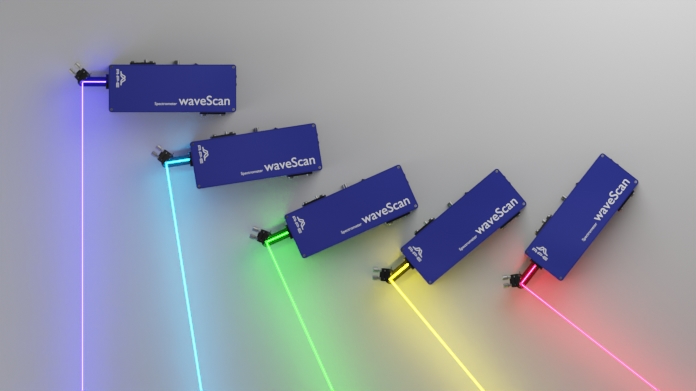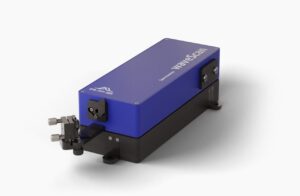Explore APE's waveScan spectrometer: advanced features, applications and spectrometer comparison
The waveScan spectrometer, developed by APE GmbH, is a compact and cost-efficient instrument designed for spectral characterization of ultrafast and continuous-wave laser systems.
APE’s waveScan is a rotating grating spectrometer (RGS) that can cover a wide wavelength range from 200 nm to 6300 nm, and it can achieve high resolution while providing several spectral scans per second. The spectrometer can be adapted to free-space or fiber lasers with a quick and easy exchangeable input port. The software that comes with the waveScan offers useful analytical tools and data export, and it can be controlled via USB or remotely via TCP/IP.
Principle of Operation
APE’s waveScan utilizes a rotating grating technology to achieve high scan rates and wide wavelength coverage. A slit allows collimated light to enter the spectrometer, where it falls onto a rotating grating. The diffracted light is then focused onto a detector, generating a spectrum as the grating spins.
Key Features
- Wide Wavelength Range: Devices can cover a broad spectral range, spanning in total from 200 nm in the ultraviolet (UV) to 6.3 µm in the mid-infrared (MIR), making it suitable for various laser sources.
- High Resolution: Achieves spectral resolutions < 0.1 nm in the visible range, ideal for detailed spectrum analysis.
- Fast Scan Rates: Offers scan speeds up to 6 spectra per second, enabling rapid spectrum acquisition for dynamic laser characterization.
- Cost-Effectiveness: Provides high performance at a competitive price compared to other spectrometers in its class.
- Compact Design: Features a small footprint, making it easy to integrate into experimental setups.
- Interchangeable Input Port: Facilitates switching between free-space and fiber-coupled lasers.
- Automatization and Remote Control: Supports control via USB or TCP/IP for automated measurements and remote operation.
- Data Analysis Software: Includes user-friendly software with graphical presentation, data export, and analysis tools.
Applications
With its unique combination of features the waveScan spectrometer boasts impressive versatility and finds applications in diverse scientific and technological fields. Here are some key areas where APE’s waveScan spectrometer shines:
- Ultrafast laser research and development
- Laser system characterization
- Spectroscopy
- Bio-photonics
- Material science
- Environmental monitoring

Advantages
Traditional Spectrometers
• Diffraction Grating: A fixed diffraction grating separates light into its component wavelengths based on their interaction with the grating’s grooves.
• Scanning: Traditional spectrometers scan the spectrum by mechanically moving the grating or detector relative to each other. This process can be slow and limit scan rates.
Rotating grating spectrometers (RGS) offer several distinct advantages over other types of spectrometers, making them attractive tools for a variety of applications. Here are some key benefits:
waveScan – Wide Wavelength Coverage with good Resolution
• RGS can cover a broad range of wavelengths, often from the ultraviolet to the mid-infrared, depending on the grating and detector configuration. In conjunction with the achievable good resolution, this makes them versatile tools for analyzing a variety of light sources and materials.
• Some RGS designs can even be customized for specific wavelength ranges, providing optimal performance for particular applications.
waveScan – Millisecond Scan Rates
• RGS can achieve scan rates up to several Hz for a full spectrum, capturing spectral changes in real-time. This is particularly valuable for studying dynamic processes like ultrafast laser pulses or transient chemical reactions.
• Compared to traditional scanning devices, RGS avoids mechanical movements like mirror translations, which can be slow and prone to wear and tear.
waveScan – Compact Design
• RGS typically have a small footprint, which makes them ideal for integration into portable instruments or space-constrained experimental setups.
• Their compact size also simplifies operation and reduces cost compared to bulkier alternatives.
waveScan – Cost-Effectiveness
• RGS often offer a good balance between performance and price compared to other high-resolution spectrometers. Their relatively simple design and efficient light utilization contribute to their competitive cost.
• This makes them accessible for a wider range of research and development activities compared to more expensive spectrometers.
Download Literature Reference List
waveScan Literature Reference List rev 1.0 (pdf / english)


